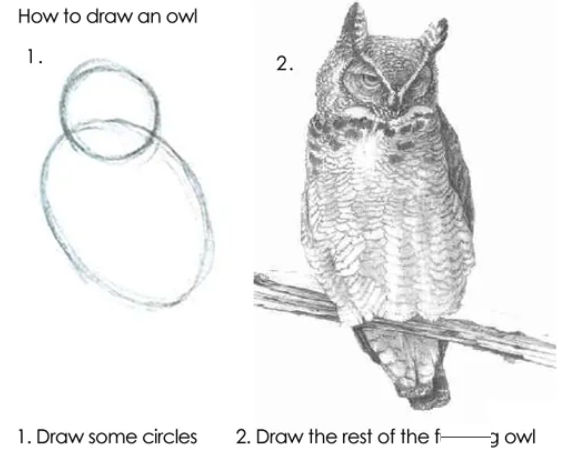The Great Expectations of AI Literacy
AI literacy is critical. Its ascendance to buzzword status sets us up for failure.

Table of Contents
The Great Expectations of AI Literacy
Last week, at The AI Show before the ASU+GSV Summit in San Diego, I had the unsettling experience of hearing what seemed to be five different definitions of “AI literacy” in a single conversation. This was not an isolated incident.
This can only mean one thing: AI literacy has catapulted into buzzword status. AI promised to transform education for the better, but the ballooning expectations behind AI literacy are setting us up for failure.
What I heard at the AI Show undersold both the complexity of teaching the necessary knowledge and skills for AI literacy and the value of those skills outside of AI contexts.
AI literacy has become a buzzword. Now what?
The danger of buzzwords is simple: they’re easy to agree with, cost little to say, and often conveniently support pre-existing agendas. As a result, they spread rapidly but yield surface-level investments and ultimately superficial outcomes.
If we let “AI literacy” continue down this path, we will miss opportunities for more meaningful change made possible by AI.
To be clear: I fully support teaching students about AI, as well as the people doing amazing work to spread the message on AI literacy far and wide (Amanda Bickerstaff and her crew at AI for Education come to mind). The ‘ick’ comes from the way the term is already being used and abused by people with self-serving agendas, often - and most alarmingly - in ways that suggest their expected outcomes vastly outstrip their implied investments.
Like it or not, this was the name of the game at The AI Show. If you believe that AI can legitimately transform education for the better, you cannot also expect its transformative power to survive buzzword-ification. The more you care about kids learning durable skills for the 21st century, the more often you should define AI literacy - and ask others to say what they mean when they use it.
From “AI literacy in K-12: a systematic literature review” (Otera et al. 2023):
AI literacy can be defined as a set of skills that enable a solid understanding of AI through three priority axes: learning about AI, learning about how AI works, and learning for life with AI
Looks great, no notes. You may bristle and, perhaps correctly, say “that’s what I thought! I was already doing that!” But you must know that when (some) edtech vendors and (some) education leaders convene and use this term, it becomes something else - a hand-waved vision that supports their own ambitions, almost never used in a way that narrows the scope of what we should all expect to be achieved.
Therein lies the risk: expectations of outputs are ballooning far beyond their requisite inputs. I heard a lot of what sounded to me like a simple two-step process:

When expectations aren’t met, and initiatives fall short of stated goals, who will take the blame? Who will bear the responsibility of cleaning up the mess and bracing for the next buzzword-driven wave? (Sorry in advance, teachers…)
We can’t just throw AI literacy onto the pile
Here’s that definition of AI literacy again:
AI literacy can be defined as a set of skills that enable a solid understanding of AI through three priority axes: learning about AI, learning about how AI works, and learning for life with AI
I’m increasingly skeptical that these skills can be adequately learned in isolation from broader literacy. Again, there is great work being done to isolate and develop these skills in students and teachers alike, but I heard from too many people that seemed to believe that we can just throw AI literacy onto the pile of ‘stuff kids should learn’ and ride off into the sunset.
The essential skills that currently fall under “AI literacy” need to be deeply embedded into a broader and more comprehensive effort to teach 21st-century literacy. To use AI effectively requires skills that reach through traditional forms of literacy and into disciplinary skills such as identifying bias, understanding context, and even visual or data literacies - all skills that apply outside of AI use as well.
Each one of these skills needs investment, embedded into existing curricula, to help students navigate a significantly more complex and fast-paced world than our brains expected to handle.
The good news is that your school or district already has time and resources carved out for this: you probably call it ‘social studies.‘
What’s next
AI literacy presents valuable new opportunities for schools and districts to teach students real-world skills, but we are already (inevitably?) falling into the trappings that prevent us from meaningful change.
To steer clear, we need to:
- Separate AI literacy as an area of academic focus from its buzzword alter ego. Kick the buzzword to the curb - or find higher ground.
- Anchor the skills needed for AI literacy to the media and digital literacy skills commonly taught in social studies classrooms - while still aligning with and branching out into other subjects.
Doing so will set students up for success with essential, durable skills that will serve them for the remainder of the 21st century, across a wide variety of contexts: AI, human, or otherwise.
After all, from who do you think AI learned its biases in the first place?

